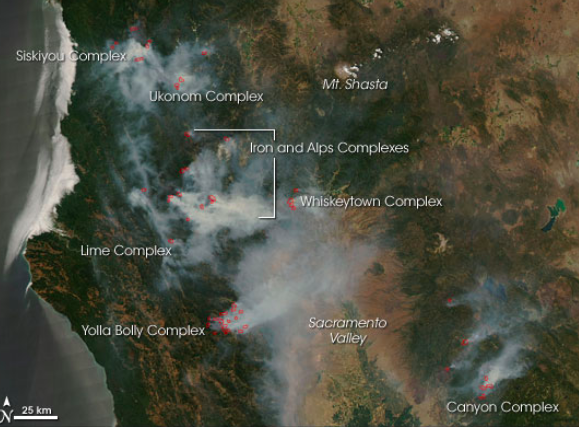Science-nerdy bingesStephanie Wright
The Berkeley Pit
“Mined for gold, silver, and copper, the region of Butte, Montana, had already earned the nickname "The Richest Hill on Earth” by the end of the 19th century.
Demand for electricity increased demand for copper so much that by World War I, the city of Butte was a boomtown. |
Photo & description from NASA, Earth Observatory |
Well before World War I, however, copper mining had spurred the creation of an intricate complex of underground drains and pumps to lower the groundwater level and continue the extraction of copper.
Water extracted from the mines was so rich in dissolved copper sulfate that it was also “mined” (by chemical precipitation) for the copper it contained. In 1955, copper mining in the area expanded with the opening of the Berkeley Pit.”
|
|
If you want to make a field trip there, Atlas Obscura provides trip planning ideas that are often different than what you would find in a AAA guidebook.
Atlas Obscura has some excellent photos from the Berkeley Pit. ~ steph
|
|
 |
So, why is it interesting to mycophiles…?
Because the extreme conditions in the mine waste pit - pH of 2.5, limited resources and
highly toxic compounds including heavy metals - have selected for bacterial and fungal species new to humankind. Those organisms produce chemicals that show antibiotic and anti-tumor properties. |
Photo: Berkeley Pit Water Samples, Credit: Courtesy of University of Montana
|
Andrea and Don Stierle talk with Hank on SciTalk's YouTube Channel. |
Very entertaining!
They talk about their work analyzing various microorganisms in the Berkeley Pit and the discovery of a new type of antibiotic. |
 |
| |
|
| |
The Stierles are prolific authors of scientific papers.
For the nitty-gritty details, see:
American Chemical Society publications |
 |
Berkeleylactones and a Citreohybriddione Analogue from Penicillium turbatum
In 2017 we reported the isolation and characterization of berkeleylactones A–H and A26771B from a coculture of two extremophilic Penicillium sp. isolated from an acid mine waste lake. Berkeleylactone A exhibited potent activity against several strains of multi-drug-resistant Staphylococcus aureus and Bacillus anthracis. |
and Journal of Organic Chemistry
Berkelic acid, a novel spiroketal with selective anticancer activity from an acid mine waste fungal extremophile
Bioassay-guided fractionation using signal transduction enzyme assays led to the isolation
of the novel spiroketal, berkelic acid 1, and of
the known gamma-pyrone, spiciferone A 4.
Berkelic acid has shown selective, nanomolar
activity against OVCAR-3, an ovarian cancer cell
line in the National Cancer Institute cell
line screen. |
Berkeleydione and Berkeleytrione, New Bioactive Metabolites from an Acid Mine Organism
Two novel hybrid polyketide-terpenoid metabolites were isolated from a Penicillium sp. growing in the Berkeley Pit Lake of Butte, Montana...
...Both compounds inhibited matrix metalloproteinase-3 and caspase-1, and berkeleydione showed activity toward non-small-cell lung cancer in NCI's human cell line antitumor screen. |
| |
|
MicrobeTV is an independent podcast network for people who are interested in the life sciences. I enjoy their podcast: This Week in Microbiology ~stephanie
|
 |
One of the show's hosts is Elio Schaechter, amateur mycologist. He is a founding member of the San Diego Mycological Society, and bemoans just a bit, the scarcity and ephemeral nature of fungi in southern California.
His book, In the Company of Mushrooms (Harvard University Press), is available for MSSF members to borrow from the MSSF Library. |
On May 23, 2020, This Week in Microbiology Podcast was entitled: The Chronicles of Narnaviruses. The hosts discussed a paper about the three-way symbiosis of narnaviruses, bacteria, and fungi.
For a deeper dive, here is a link to the paper: Narnaviruses: novel players in fungal-bacterial symbioses. Portion of Abstract: Rhizopus microsporus is an early-diverging fungal species with importance in ecology, agriculture, food production, and public health. Pathogenic strains of R. microsporus harbor an intracellular bacterial symbiont, Mycetohabitans (formerly named Burkholderia). This vertically transmitted bacterial symbiont is responsible for the production of toxins crucial to the pathogenicity of Rhizopus and remarkably also for fungal reproduction.
|
| |
 A recent entry (Dec 6, 2021) on that blog, was First the Fire, Then the Fungus, by Roberto Kolter
[It's a great read! ~SJW] A recent entry (Dec 6, 2021) on that blog, was First the Fire, Then the Fungus, by Roberto Kolter
[It's a great read! ~SJW]
"Fire's beneficial effects in invigorating ecosystems are well recognized..."
"There are numerous plants and animals said to be pyrophilous, but the clear winners in terms of being the first to thrive in recently burnt areas are the pyrophilous fungi."
|
|

In recent years, wildfires in California and other parts of the western US, have triggered an increase in Valley Fever disease cases - Coccidioidomycosis
[that's a mouthful!]
Firefighters are at risk.
[photo credit: NASA, 2008]
[American Journal of Industrial Medicine] Coccidioidomycosis outbreak among inmate wildland firefighters: California, 2017, published Jan 23, 2021
|
|
|
|